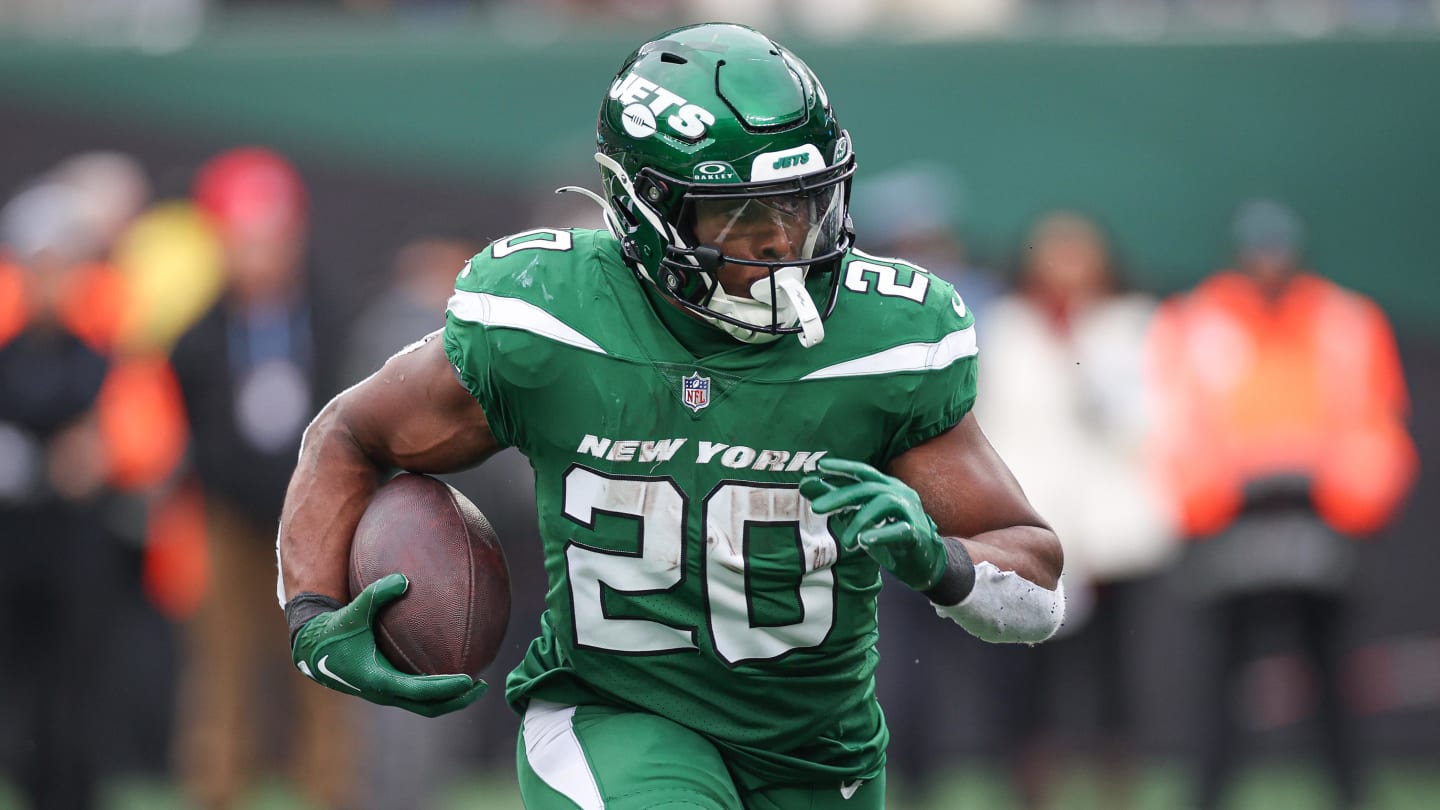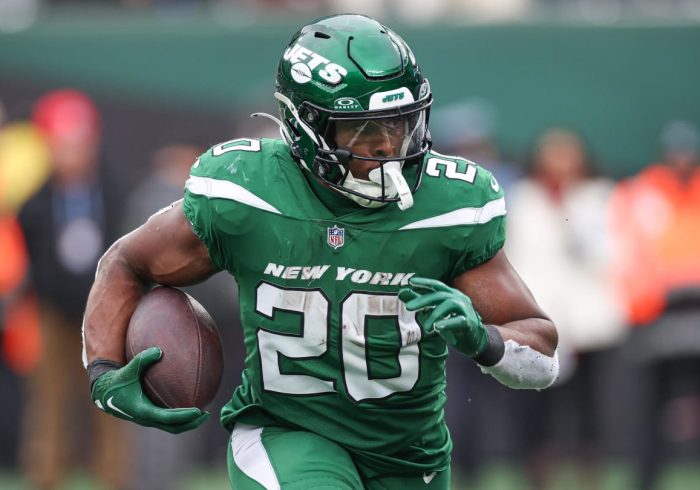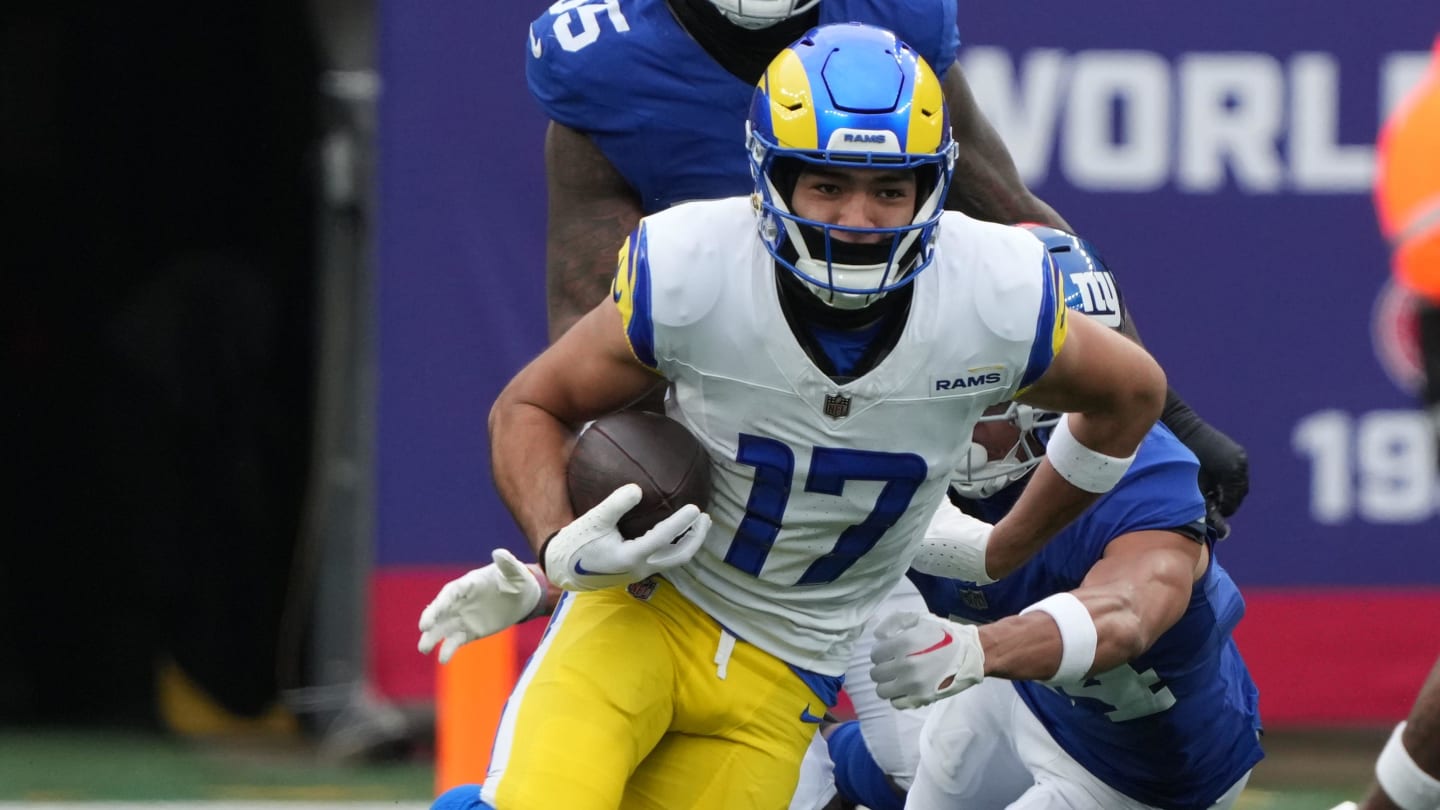20 Fantasy Stats From 2023 We Won’t See Again in 2024

Greatness is difficult to achieve, and it can be even more difficult to duplicate. That’s why I always preach to fantasy football managers, new and old, to “beware the magical season" when preparing for drafts.
The NFL has had more than its share of players who failed to make good after a "magical" season. Remember Braylon Edwards, who looked like a fantasy star when he posted 1,289 yards and 16 touchdowns for the Browns in 2007? He went on to score 15 more touchdowns ... the rest of his career.
A more recent example is Josh Jacobs, who led the NFL in rushing yards and was the RB3 with the Raiders in 2022. Unfortunately, his stats took a nosedive last season. Jacobs rushed for 848 fewer yards and averaged 5.2 fewer fantasy points, finishing just 28th among fantasy runners.
There are countless other examples too, some of which include former gridiron greats. Heck, Dan Marino threw for almost 1,000 fewer passing yards and 18 fewer touchdowns (1985) following what was the best statistical campaign of his Hall-of-Fame career in 1984. Even Marino isn't exempt!
The point here is one monster season doesn't guarantee another, even if an elite athlete recorded it. So, which players who exceeded expectations last season might be in line for a decline in their statistical success in 2024?
Here's a list of 20 players, some of whom are elite fantasy players, who will still likely struggle to produce the same statistics from a season ago.
Josh Allen’s 15 rushing touchdowns: Allen and Jalen Hurts both rushed for 15 scores a season ago, which is the most by a quarterback in league history. What’s more, there’s only been six quarterbacks to rush for at least 10 touchdowns in a single season in the Super Bowl era. That list includes Allen, Hurts (2), Cam Newton (2), Kyler Murray, Kordell Stewart and Daunte Culpepper. Allen had never rushed for more than nine touchdowns in a single season before this past season, so I expect that 15-score total to decline.
Jalen Hurts’ 15 rushing touchdowns: Hurts is in the same boat as Allen, as he’ll struggle to hit the 15-rushing touchdown total again. The good news, though, is Hurts hit double digits in that category each of his last three seasons. Still, I’m more comfortable with a 10-TD projection, especially with fantasy superstar running back Saquon Barkley in the backfield.
Justin Herbert’s 35.1 pass attempts per game: The Los Angeles Chargers ranked seventh in pass percentage last season under Kellen Moore, and Herbert averaged 35.1 pass attempts in 13 games. New offensive coordinator Greg Roman has served in that role for three different teams in 10 years at the NFL level. During that time, the most pass attempts one of his quarterbacks has averaged was Lamar Jackson (31.8 in 2021). He is the lone QB to average more than 30 pass attempts per game under Roman. That’s bad news for Herbert, who will be hard-pressed to duplicate his 35.1 attempts.
Matthew Stafford’s late-season run: Stafford finished last year as the QB15, averaging 16.2 points per game. It was a tale of two seasons, however, as Stafford averaged 251.1 passing yards, 13.5 fantasy points and scored nine touchdowns in his first nine games. Over his final six starts, he averaged 284.1 passing yards, 20.3 points and threw 15 touchdowns. In that span, Stafford scored at least 18.5 points in five straight games. He had strung together five straight such performances just once before in his career (2013). I wouldn’t expect the veteran to duplicate such a productive span of games again.
Breece Hall’s 95 targets and 76 receptions: Hall finished last season as the RB2, due in part to a serious statistical run in the second half that saw him emerge as a huge option in the Jets pass attack. In his first eight games, Hall averaged 3.9 targets and 2.9 catches. He went off in his final 10 games, however, averaging a stout 6.8 targets and 5.7 receptions.
That rise in targets and catches came in large part because of the quarterbacks the Jets were using. Trevor Siemian and Tim Boyle started a combined five games (played in eight), and they targeted Hall a ton out of the backfield. The duo combined to target running backs on nearly 30 percent of their pass attempts! By comparison, Aaron Rodgers targeted his runners as receivers in just 20.7% of his passes in his last season in Green Bay.
Raheem Mostert’s 21 touchdowns: Mostert came out of nowhere to score 21 times last season. He had scored just 19 touchdowns in his previous eight years … combined! Those touchdowns made up for 47 percent of his 267.7 points, so regression is coming. Heck, even if Mostert scores eight to 10 touchdowns in 2024, I’d consider that a major win as a fantasy manager.
Aaron Jones’ late-season touches: Jones scored fewer than 10 fantasy points in all but three of his first eight games of last season. In that time, he averaged 12.8 touches, 3.8 yards per rush, and 10.9 points. Over his final three regular-season games, however, he averaged a robust 23.3 touches, 5.7 yards per rush and 15.9 fantasy points. That is a massive increase for the veteran runner.
If we also include his two playoff games, Jones averaged 22.6 touches, 5.7 yards per rush and 19.4 points in his final five contests. He also rushed for 100-plus yards in every game. Before this “magical” stretch, Jones had never rushed for 100-plus yards in more than two consecutive games! So, as good as he was in this stretch, it’s likely to be an outlier.
Gus Edwards’ 13 rushing touchdowns: Edwards was a red-zone machine last season, scoring 13 touchdowns on the ground. He had rushed for 13 touchdowns in his previous four years … combined! So, while he will be in the run-based offense of new coordinator Greg Roman in Los Angeles, Edwards will have competition for touches in the form of J.K. Dobbins and rookie Kimani Vidal. Six to eight touchdowns might be more attainable.
Puka Nacua’s 1,575 receiving yards: Nacua was a stat monster last season, finishing fourth in fantasy points among wideouts. He did it, in large part, based on his rookie-record 1,575 receiving yards. That begs the question … what if Cooper Kupp stays healthy for most of this season?
After all, Nacua averaged 78.7 yards in the 12 games he played with Kupp last season. That would be around 1,338 yards over a full season. In the five games Nacua played without Kupp, he averaged 108.4 yards. That would project to over 1,840 yards. So, anyone who is drafting Nacua in the first round and expecting a duplication of his 2023 yardage totals has to be doing so with the thought Kupp is going to miss a portion of the season. If not, Nacua might end up being less productive in terms of real and fantasy football.
Stefon Diggs 160 targets: Diggs averaged 9.4 targets per game last season and was sixth in targets among wideouts. It was the fourth straight year he had seen at least 154 targets. That trend is unlikely to continue though, as he now joins a crowded receiver’s room with Nico Collins, Tank Dell and others. With Collins averaging 7.3 targets per game and Dell at just under seven, it’s difficult to see Diggs getting over nine per game, not to mention 160 targets. Instead, I’d project him for closer to 130-140 unless injuries occur.
Keenan Allen’s 1,249 receiving yards: Some might have forgotten because he was injured late in the season, but Allen was an elite fantasy wideout in his first 13 games. That won’t be the case this season, though. With his move to the Bears, he’ll have to share targets with DJ Moore, rookie Rome Odunze, and Cole Kmet. Also, keep this in mind … the Bears have had only nine wide receivers post 1,000-plus yards in the Super Bowl era. What’s more, the offense has produced multiple 1,000-yard WRs in the same season twice (1995, 2013).
Courtland Sutton’s 85.6% catchable target rate: Sutton finished as the WR35 last year, which came even though he scored 10 touchdowns and was third among wideouts (min. 75 targets) in catchable target rate. That came because of Russell Wilson, who ranked third in adjusted completion percentage among quarterbacks with at least 10 games played. That stat factors in drops, spikes, throwaways, hits as the ball is thrown and batted balls, per Fantasy Points Data. With a rookie in Bo Nix or Zach Wilson (QB21 in ADJ CMP%), Sutton will likely see far fewer accurate passes in the Broncos offense.
Rashee Rice late-season target share: Rice was one of the top wide receivers in fantasy football in the second half of last season, ranking WR8 based on points over the final eight weeks. In that time, he saw 23.9% of the wide receiver targets in Kansas City, compared to a 12.6% share in his first 10 contests. The Chiefs added Marquise Brown and rookie Xavier Worthy in the offseason, however, which will no doubt put a dent into Rice’s share. He is also expected to be suspended for off-field issues, decreasing his value further.
DeAndre Hopkins’ 137 targets: Hopkins has long been a fantasy star, but he’s started to lose a little of his sparkle. He posted an average of 13.2 fantasy points per game last year, which is his lowest total since his rookie campaign, and it took him 137 targets to do it. With the addition of Calvin Ridley, who saw 136 targets last season, not to mention Tyler Boyd, who knows the offense of new head coach Brian Callahan, and Nuk’s target share is in serious danger of dropping even further as he enters his age-33 campaign.
Jordan Addison’s 10 receiving touchdowns: Addison finished a solid WR23 as a rookie, mostly on the strength of his 10 touchdown catches. The problem is seven of those scores came with Kirk Cousins throwing him the football. In the nine games without him, Addison found the end zone just three times. Who knows, maybe journeyman San Darnold or rookie J.J. McCarthy will exceed expectations, but 10 scores for Addison seems unlikely.
Adam Thielen’s 231 PPR fantasy points: Thielen was a star in the first half of last season, ranking eighth in fantasy points among wideouts while averaging 17.8 points. His stats went south the rest of the season, however, as Thielen was the WR43 in his final eight games with an average of 8.9 points. With the additions of Dionte Johnson and Xavier Legette, Thielen will struggle to hit even the 200-point mark during his age-34 campaign.
Evan Engram’s 963 receiving yards: Engram is coming off a career season that saw him put up 963 yards, which is 197 more yards than his previous high (2022). Fantasy managers should keep in mind, however, he was more effective when Christian Kirk was out. In five games without Kirk, Engram averaged a robust 71.4 yards. Compare that to the 50.5 yards he averaged when Kirk was active, and it’s obvious Engram’s ceiling was affected. Also, the Jaguars added Gabe Davis and Brian Thomas Jr. in the offseason.
David Njoku’s 882 receiving yards: Njoku was a fantasy star last season, finishing sixth among tight ends in total fantasy points. He was also sixth in yards at the position. Where I’m concerned is in his splits with and without Deshaun Watson. When Joe Flacco was in place of an injured Watson, Njoku averaged 78 yards per game. With Watson under center, that total shrunk to a modest 38.3 yards. The Browns also added wideout Jerry Jeudy in the offseason, so Njoku could be hard-pressed to post more than 650 yards.
Cole Kmet’s touchdown market share: Kmet was a popular target for Justin Fields in the red zone last season, posting a 31.6% receiving touchdown market share (min. 75 targets) per Fantasy Points Data. That was second best behind only Sam LaPorta. Unfortunately, that percentage seems destined to fall with the trio of Moore, Allen, and Odunze at wide receiver, not to mention the addition of veteran tight end Gerald Everett, in 2024.
Jonnu Smith’s 70 targets: There was a time last season when Smith was a startable asset in fantasy leagues, even outscoring his former teammate, Kyle Pitts. Unfortunately, his move to Miami will not benefit him in the stat sheets. Since coach Mike McDaniel took over the offense, his tight ends have averaged a league-low 2.2 fantasy points per game. Their tight ends also ranked dead last in targets, receptions and yards, and they’re tied for the second-fewest touchdowns scored. That’s bad news for Smith’s fantasy appeal.


